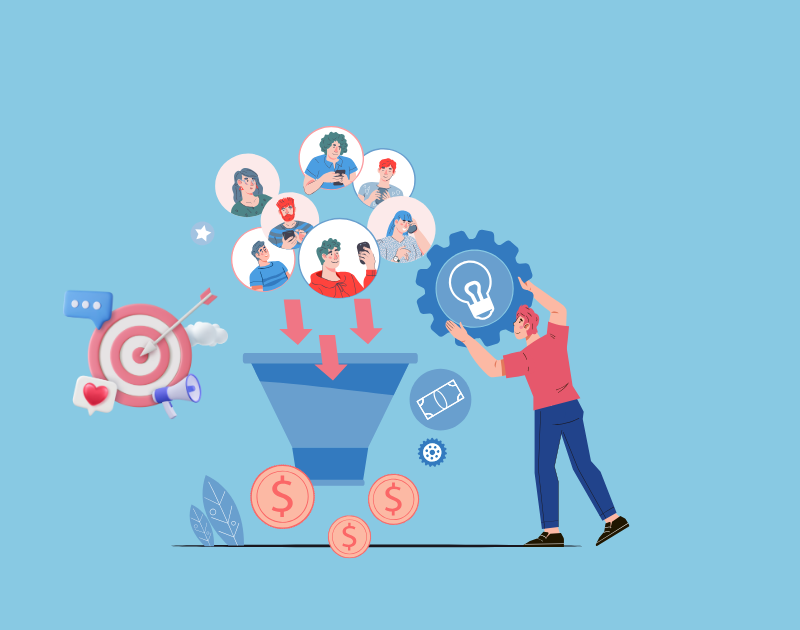Introduction
In today’s digital-first world, a business’s website is more than just an online presence—it’s the most powerful sales tool at your disposal. Whether you’re running a small local shop or a global enterprise, your website plays a crucial role in attracting customers, generating leads, and driving conversions.
With consumer behavior shifting toward digital interactions, a well-optimized website can work for your business 24/7, helping potential customers find you, learn about your products or services, and ultimately make a purchase. In this blog, we’ll explore why your web-site is your most valuable sales tool and how you can leverage it for maximum success.
Table of Contents
1. Your Website is Open 24/7

Unlike a brick-and-mortar store or a sales team that operates during business hours, your web-site is accessible around the clock. This means potential customers can learn about your business, browse your products or services, and even make purchases at any time—whether it’s during lunch breaks, late at night, or on weekends.
A well-optimized website ensures that you’re not losing sales opportunities just because your physical office is closed. Automated responses, live chat, and AI-powered chatbots can further enhance customer interactions and engagement.
2. First Impressions Matter
Your website is often the first interaction a potential customer has with your brand. A poorly designed, slow, or outdated web-site can drive visitors away and diminish your credibility. On the other hand, a professional, fast-loading, and user-friendly web-site creates a positive first impression and builds trust with your audience.
Key elements that impact first impressions include:
- A clean, modern design
- Mobile responsiveness
- Fast loading speed
- Clear and compelling messaging
- Easy navigation
Ensuring these elements are optimized can keep visitors engaged and encourage them to explore further.
3. A Powerful Lead Generation Machine

A well-designed website doesn’t just attract visitors—it converts them into leads and customers. By incorporating lead generation strategies, such as contact forms, opt-in email sign-ups, and free resources (like eBooks or webinars), you can capture visitor information and nurture them through the sales funnel.
Essential lead generation elements include:
- Strategically placed call-to-action (CTA) buttons
- Pop-ups for lead capture (used sparingly to avoid annoyance)
- Landing pages for specific campaigns
- Automated email follow-ups
By leveraging these tactics, your web-site can generate quality leads without requiring direct manual outreach.
4. Educating and Nurturing Potential Customers
Today’s buyers are more informed than ever. They prefer to research before making a purchase decision. Your website serves as an educational hub where prospects can find answers to their questions, understand the benefits of your offerings, and learn more about your industry.
Ways to educate your audience effectively:
- Blog Posts & Articles – Regular, SEO-optimized content that answers common customer questions.
- Case Studies & Testimonials – Showcasing real-life success stories to build credibility.
- FAQs & Knowledge Base – Addressing common concerns proactively.
- Video Content & Webinars – Engaging ways to demonstrate your expertise and explain complex concepts.
By offering valuable content, you position your brand as an authority, making it easier for potential customers to trust and choose you.
5. Enhancing Customer Experience and Engagement
An interactive and engaging website ensures visitors stay longer and explore more. Features like live chat, quizzes, and recommendation engines personalize the user experience and keep potential buyers engaged.
Some engagement-boosting features include:
- Live Chat Support – Instant assistance can increase conversions.
- Personalized Recommendations – AI-powered product/service suggestions.
- Interactive Tools – Calculators, quizzes, or assessments related to your industry.
- Social Proof – Customer reviews, testimonials, and user-generated content to build credibility.
Providing a seamless and engaging experience increases the chances of visitors taking the desired action, whether it’s signing up for a newsletter or making a purchase.
6. A Central Hub for All Marketing Efforts
Your website serves as the foundation for all your digital marketing strategies. Every online marketing effort—from social media campaigns to email marketing—ultimately leads back to your website. Ensuring it’s optimized for conversions maximizes the return on investment (ROI) of your marketing activities.
How your website integrates with marketing channels:
- SEO (Search Engine Optimization) – Ranking higher in search results for organic traffic.
- Social Media Marketing – Directing social followers to your website.
- Email Marketing – Sending newsletters and promotional emails with links to landing pages.
- Paid Advertising – Running Google Ads and social media ads that drive traffic to targeted pages.
A strategic website ensures that every visitor from any marketing channel has a clear pathway to conversion.
7. Data-Driven Decision Making

One of the biggest advantages of a website is the ability to track and analyze visitor behavior. Using tools like Google Analytics, businesses can gain insights into traffic sources, user behavior, and conversion rates.
Key website metrics to track:
- Traffic Sources – Where visitors are coming from (organic, social, paid, referral).
- Bounce Rate – The percentage of visitors leaving without interacting.
- Conversion Rate – The percentage of visitors taking a desired action.
- Time on Page – How long users spend on different pages.
By analyzing these metrics, you can optimize your content, design, and marketing strategies to improve performance and maximize sales.
8. Trust and Credibility Factor
A well-structured and secure website builds trust and credibility with potential customers. With cybersecurity concerns on the rise, ensuring your website is secure and compliant with industry standards is essential.
Key trust-building elements:
- SSL Certification – Secure browsing with HTTPS encryption.
- Customer Testimonials & Reviews – Showcasing satisfied customers.
- Professional Design – A clean, organized layout that reflects credibility.
- Privacy Policies & Terms of Use – Clearly stating how customer data is handled.
Building trust through transparency and security ensures that visitors feel confident in doing business with you.
9. Scalability and Long-Term Growth
Unlike traditional sales tools, a website can grow and evolve alongside your business. As your business expands, your website can be upgraded with additional features like e-commerce capabilities, automation tools, and AI-driven functionalities.
Scalability features include:
- Adding e-commerce for direct online sales.
- Implementing automation for lead nurturing and customer support.
- Expanding content resources for better engagement.
- Enhancing design and performance as traffic increases.
A scalable website ensures that your business stays competitive and adaptable in an ever-changing digital landscape.
Conclusion
Your website is more than just a digital storefront—it’s the most powerful sales tool in your business arsenal. It operates 24/7, creates lasting first impressions, generates leads, nurtures customers, and integrates seamlessly with all marketing efforts. By optimizing its design, content, and functionality, you can turn your website into a high-performing sales engine.
If your website isn’t delivering the results you expect, now is the time to audit its performance and make necessary improvements. A strategic, well-optimized website can drive consistent growth and help your business reach new heights.
Ready to enhance your website’s potential? Contact a digital marketing expert today!

